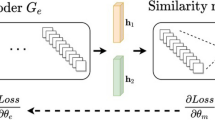Abstract
A new efficient method to select an optimum or near optimum set of test points for fault dictionary techniques in analog fault diagnosis is proposed. This is done by constructing a fault-isolated table firstly according to the integer-coded fault dictionary, and picking the special test points with particular fault isolate abilities out from the candidate test points set. This step can help us save the total cost of computation and even find the global minimum test-point set directly. After this step, the selected test points might isolate most of the defined faults together, and these isolated faults (rows) and the chosen test points (columns) are deleted from the fault dictionary, the dimension of which will reduce quite a lot. And then the inclusive and exclusive approach are combined together to choose other optimum test points from the candidate test points set to solve the problem. Three analog circuits’ examples and the statistical experiments are given to demonstrate the feasibility and effectiveness of the proposed algorithm, the existing classical algorithms are also used to do the comparison. The results indicate that the proposed method has a better tradeoff between the solution accuracy and the computational cost, and it is superior to other methods in its computational efficiency and quality of final solution. Therefore, it is a good solution to minimize the size of the test-point set, and practical for medium and large scale systems.



Similar content being viewed by others
References
Augusto, J. S. & Almeida, C. (2006). A tool for test point selection and single fault diagnosis in linear analog circuits. In Proceeding of the XXI International Conference on Design of Systems and Integrated Systems, Barcelona, Spain.
Bandler, J. W., & Salama, A. E. (1981). Fault diagnosis of analog circuits. Proceedings of the IEEE, 73, 1279–1325.
Bandler, J. W., & Salama, A. E. (1985). Fault diagnosis of analog circuits. Proceedings of the IEEE, 73(8), 1279–1325.
Duhamal, P., & Rault, J. C. (1979). Automatic tests generation techniques for analog circuits and systems: A review. IEEE Transactions on Circuits and Systems I, CAS-26, 440–441.
Golonek, T., & Rutkowski, J. (2007). Genetic-algorithm-based method for optimal analog test points selection. IEEE Transactions on Circuits and Systems II: Express Briefs, 54(2), 117–121.
Hochwald, W., & Bastian, J. D. (1979). A dc approach for analog fault dictionary determination. IEEE Transactions on Circuits and Systems, CAS-26, 523–529.
Lin, P. M., & Elcherif, Y. S. (1985). Analogue circuits fault dictionary—New approaches and implementation. The International Journal of Circuit Theory and Applications, 13(2), 149–172.
Pinjala, K. K. & Bruce, C. K. (2003). An approach for selection of test points for analog fault diagnosis. In Proceedings of the 18th IEEE International Symposium on Defect and Fault Tolerance in VLSI Systems (pp. 287–294).
Prasad, V. C., & Babu, N. S. C. (2000). Selection of test nodes for analog fault diagnosis in dictionary approach. The IEEE Transactions on Instrumentation and Measurement, 49(6), 1289–1297.
Skowron, A., & Stepaniuk, J. (1991). Toward an approximation theory of discrete problems: Part I. Fundamenta Informaticae, 15(2), 187–208.
Spaandonk, J. & Kevenaar, T. (1996). Iterative test point selection for analog circuits. In Proceedings of 14th on VLSI Test Symposium (pp. 66–71). Princeton, USA.
Starzyk, Janusz A., Liu, Dong, Liu, Zhi-Hong, Nelson, Dale E., & Rutkowski, Jerzy O. (2004). Entropy-based optimum test nodes selection for analog fault dictionary techniques. The IEEE Transactions on Instrumentation and Measurement, 53, 754–761.
Stenbakken, G. N., & Souders, T. M. (1987). Test point selection and testability measure via QR factorization of linear models. The IEEE Transactions on Instrumentation and Measurement, IM-36(6), 406–410.
Varghese, X., Williams, J. H., & Towill, D. R. (1978). Computer aided feature selection for enhanced analogue system fault location. Pattern Recognition, 10(4), 265–280.
Yang, C. L., Tian, S. L., & Long, B. (2009). Application of heuristic graph search to test point selection for analog fault dictionary techniques. The IEEE Transactions on Instrumentation and Measurement, 58(7), 2145–2158.
Yang, C. L., Tian, S. L., & Long, B. (2009). Test points selection for analog fault dictionary techniques. The Journal of Electronic Testing, 25(2–3), 157–168.
Yang, C. L., Tian, S. L., & Long, B. (2010). A test points selection method for analog fault dictionary techniques. Analog Integrated Circuits and Signal Processing, 63(2), 349–357.
Author information
Authors and Affiliations
Corresponding author
Rights and permissions
About this article
Cite this article
Zhao, D., He, Y. A new test points selection method for analog fault dictionary techniques. Analog Integr Circ Sig Process 82, 435–448 (2015). https://doi.org/10.1007/s10470-014-0469-8
Received:
Accepted:
Published:
Issue Date:
DOI: https://doi.org/10.1007/s10470-014-0469-8




